Here is another installment in our ongoing series, showing the transition from the old CTA Garfield Park “L” to the present Congress Expressway rapid transit line in the 1950s. If You would like to see our previous posts, just type “Congress” or “Garfield” in the search window on our blog’s home page.
Enjoy!
-David Sadowski
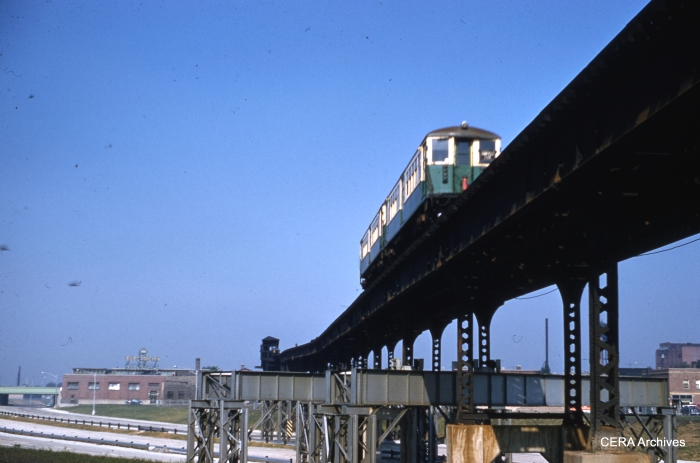
A two-car train of 4000s crosses the Congress (now Eisenhower) expressway at Kostner in August 1956. (Photographer unknown)
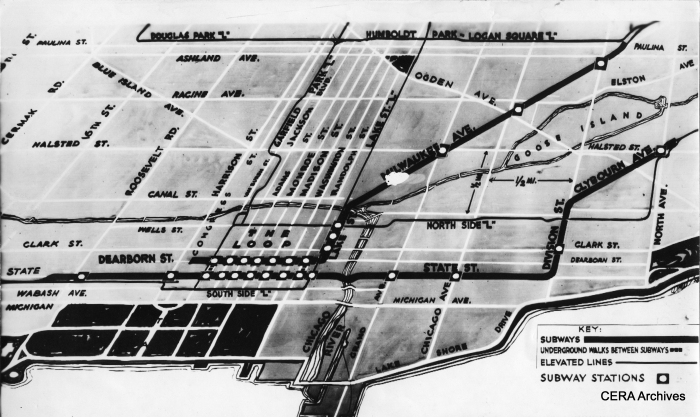
The public was somewhat baffled when Phase 1 of the City’s subway plan was approved by the PWA in 1938. The Dearborn-Milwaukee subway simply ended at Dearborn and Congress, with no explanation of where it should continue. However, it was always intended to connect to a west side median line in the middle of the Congress Expressway. Work on the Dearborn-Milwaukee tube was 80% completed when work halted in 1942 due to the war. But construction work west on Congress did not begin until after the war. Plans originally called for an underground turning loop at LaSalle, but CTA decided a stub-end terminal was sufficient in 1947. This is where service ended from 1951-58. (Photographer unknown)
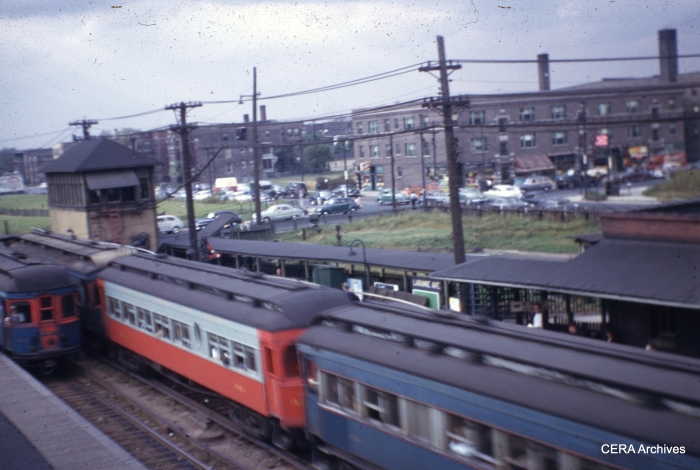
Two trains of CA&E wood cars passing each other at Laramie, circa 1950. (Photographer unknown)
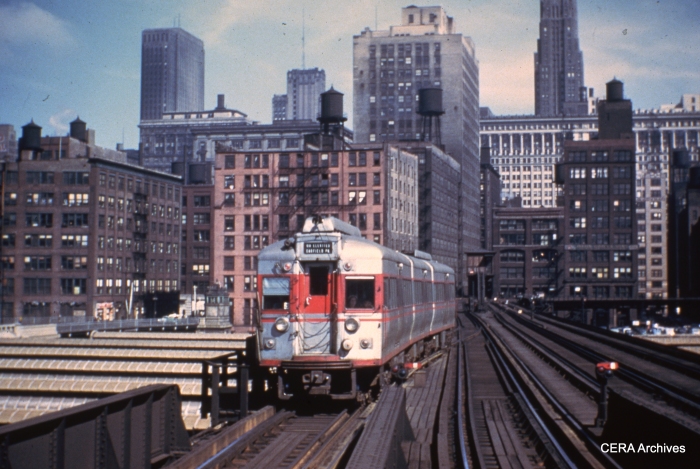
A CTA articulated “doodlebug” from the original 5000-series crosses the Union Station trainshed, probably in the late 1940s. (Photographer unknown)

CA&E car 408 is at the rear of an eastbound Chicago Limited, approaching the Loop, sometime before the end of service in September 1953. (Photographer unknown)
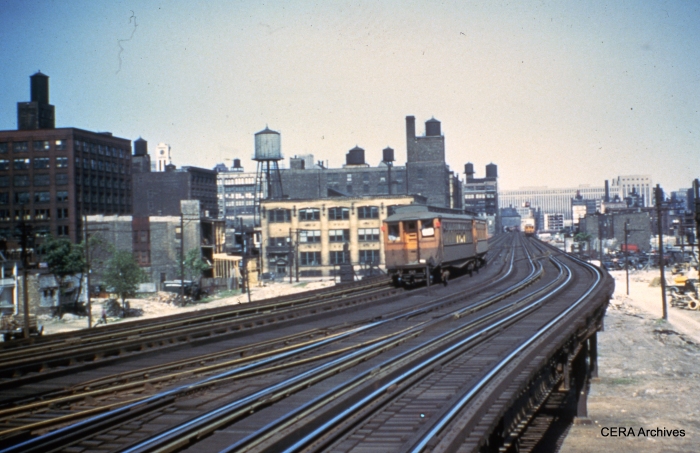
A two-car train of CTA woods heads west on the Garfield “L”, somewhere east of Marshfield Junction. (Photographer unknown)

CA&E 427 is a Wheaton Local heading west on the Garfield Park “L” sometime before downtown service ended in September 1953. (Photographer unknown)
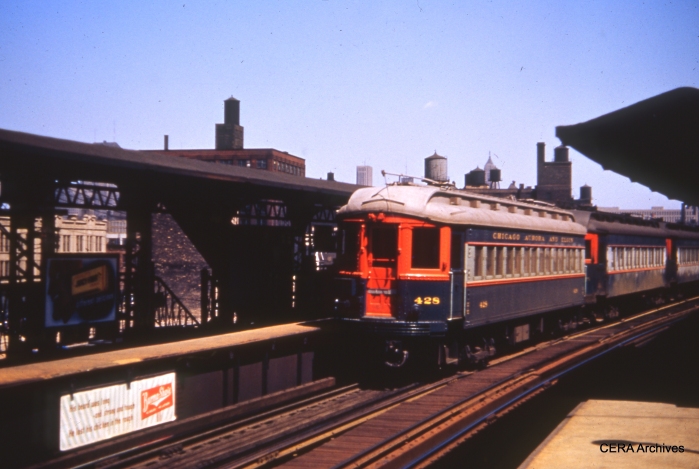
CA&E 428 westbound at Racine in May 1952. (Photographer unknown)

CA&E 458 heads up a three-car train of curved-sided cars, the last new equipment the interurban received, westbound at Laramie, sometime prior to September 20, 1953. (Photographer unknown)
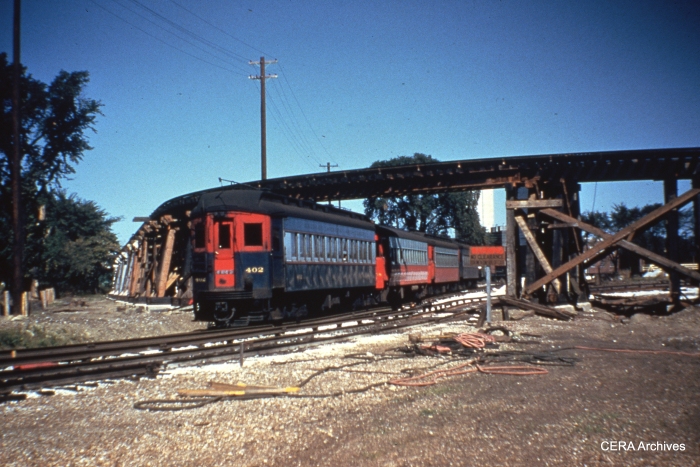
CA&E steel car 402 heads up a westbound train at DesPlaines Avenue circa 1953-57. (Photographer unknown)

CA&E 423 and 424 turning around at DesPlaines Avenue circa 1953-57. (Photographer unknown)
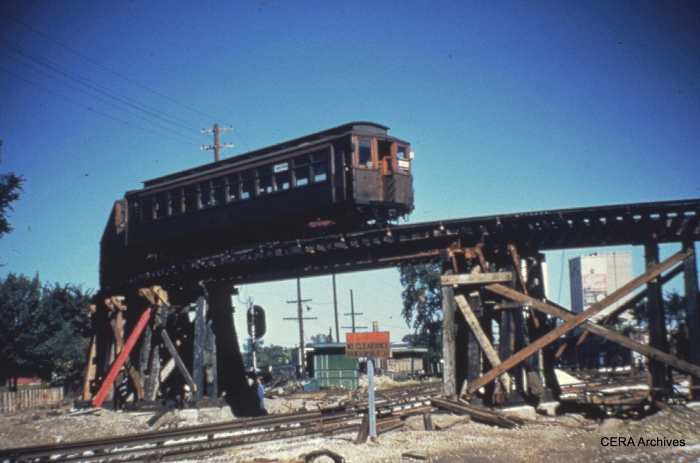
CTA and CA&E used grade-separated turnback loops at DesPlaines Avenue from 1953-57. (Photographer unknown)
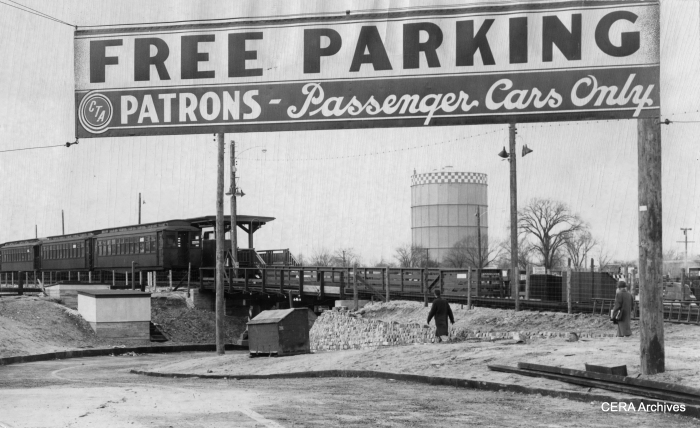
The CTA opened a free “park’n’ride” lot at DesPlaines Avenue on December 15, 1953. The large gas tank in the background was a Forest Park landmark for years. (Photographer unknown)
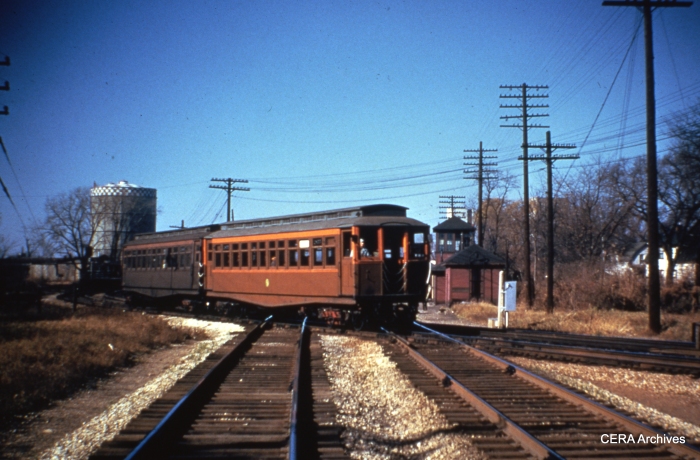
A train of CTA wood cars crosses the B&O just east of DesPlaines Avenue, at the current site of the Eisenhower expressway. (Photographer unknown)
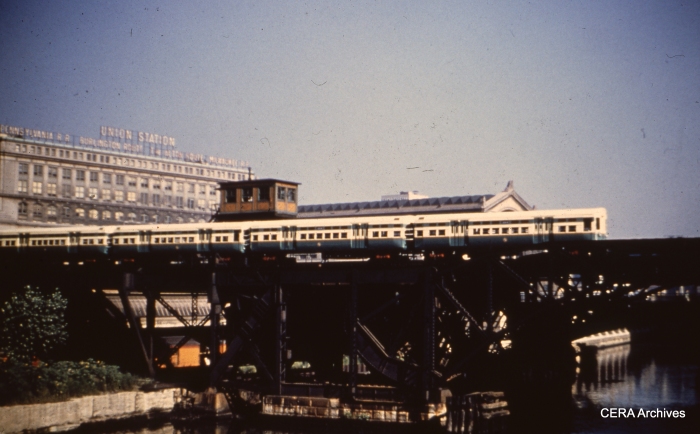
CTA flat-door 6000s cross the Chicago River near Union Station. (Photographer unknown)
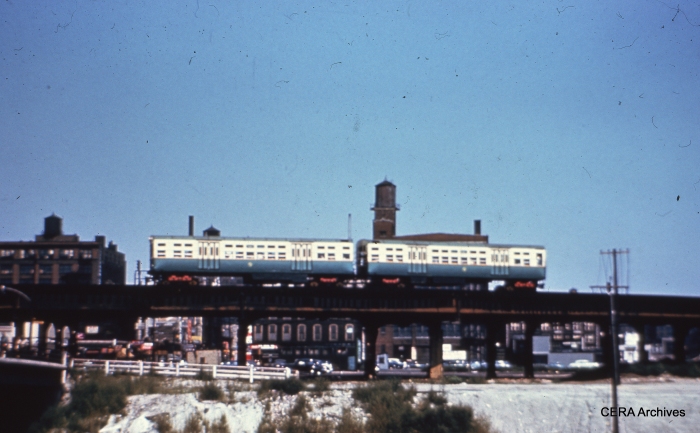
Expressway construction just west of the Loop is well underway as a two-car CTA train of 6000s runs along the endangered Garfield “L”. (Photographer unknown)

This would appear to be another view of where the Garfield “L” crossed the Congress expressway at Kostner. (Photographer unknown)
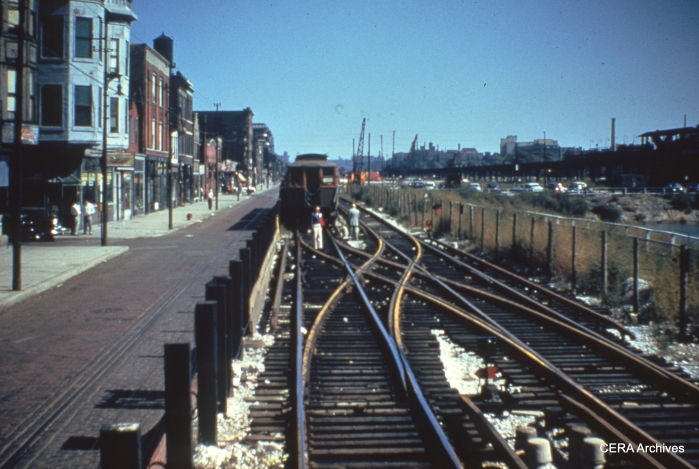
From the sign on the wooden “L” car, this must be a CTA test train on the temporary Van Buren Street trackage, just prior to the beginning of service in September 1953. Streetcar tracks are still visible in Van Buren Street. (Photographer unknown)
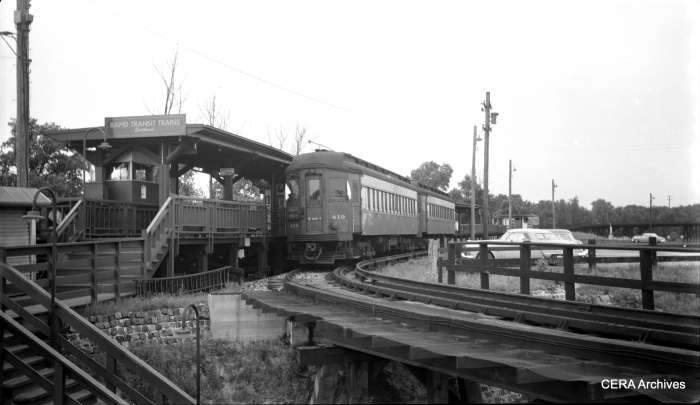
CA&E steel car 419 is on the turning loop at DesPlaines Avenue on July 4, 1956. (Photographer unknown)
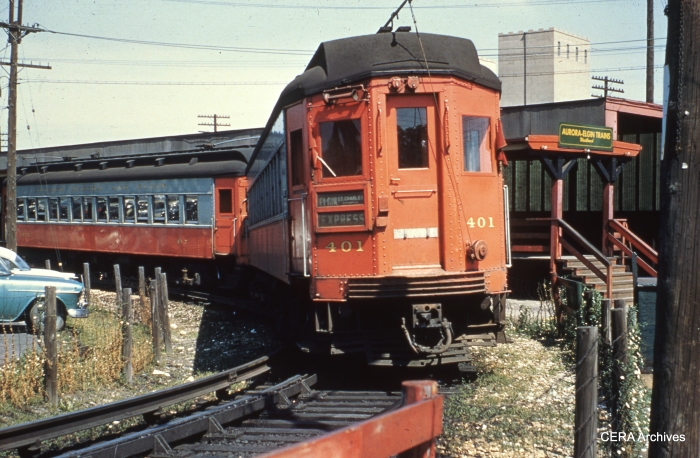
CA&E trains turned around at DesPlaines Avenue on a turnback loop from 1953-57. (Photo by W. Fred Stone)
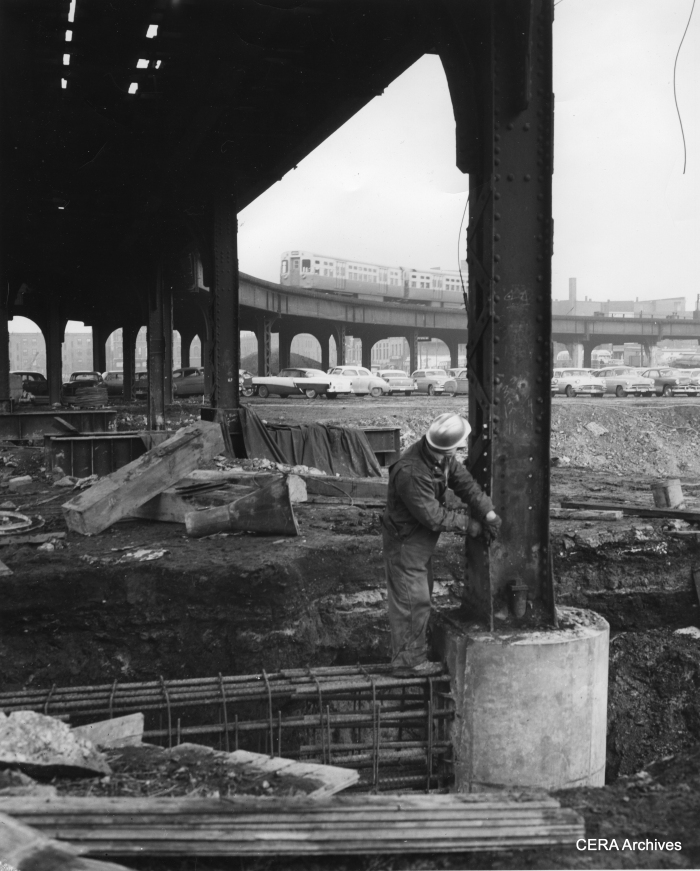
This photo is somewhat of a mystery. The date given is March 17, 1958, but by this time, the Congress expressway had been open for a few years. The cars in the background don’t appear much newer than 1954-55. Perhaps this is the Sacramento crossing, and the date on the photo is wrong. It would appear that the highway is being dug out underneath the “L”. (Photo by Kelly Powell)
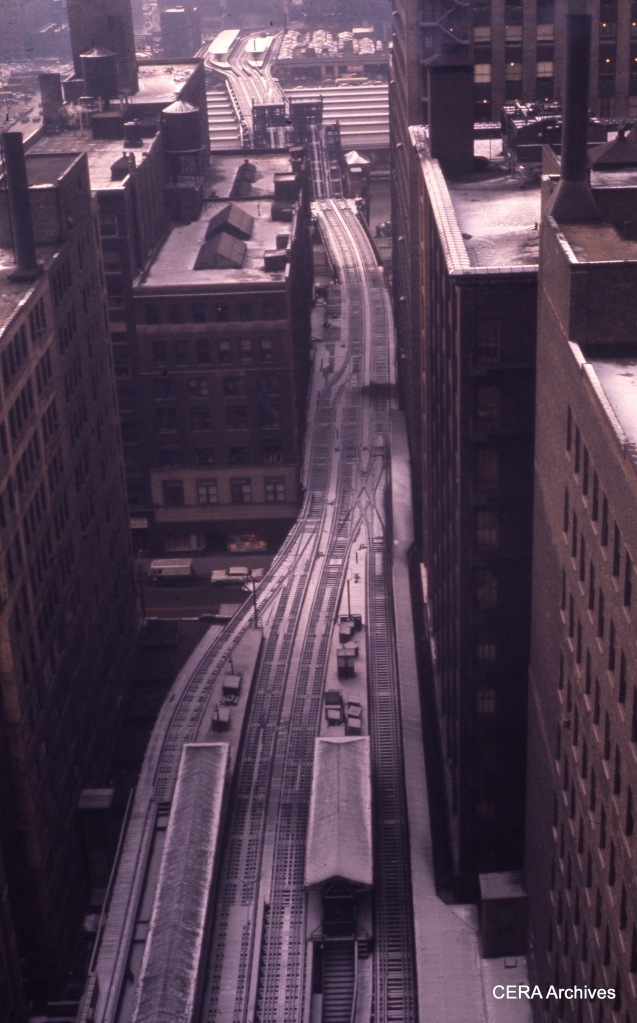
In this January 1960 view, we see the Garfield “L” structure heading west from the Loop, between the time service was discontinued (1958) and when the structure was torn down (1964). From the track arrangement, it would appear that one of the two bridges over the Chicago River was taken out of service sometime between the end of CA&E operation downtown (1953) and the rerouting of CTA service through the old Wells Street Terminal to a new connection with the Loop “L” structure. Other parts of the old Garfield “L” were torn down in 1959. (Photographer unknown)
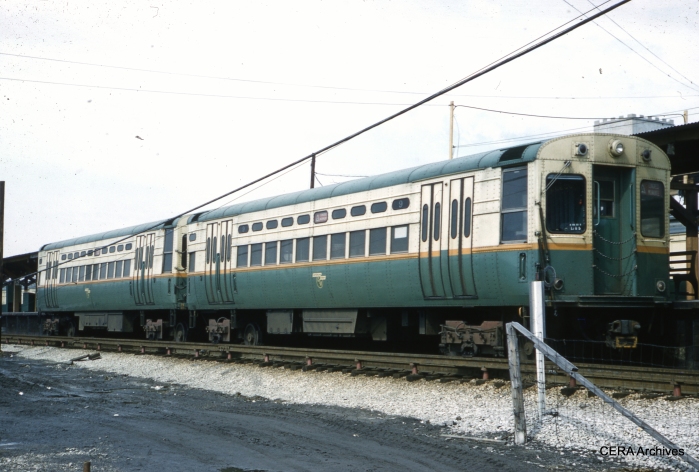
CTA 9 and 10 at DesPlaines Avenue on April 3, 1960. The new single car units were first used on the Congress-Douglas-Milwaukee route, before being moved to Evanston in 1961. (Photographer unknown)
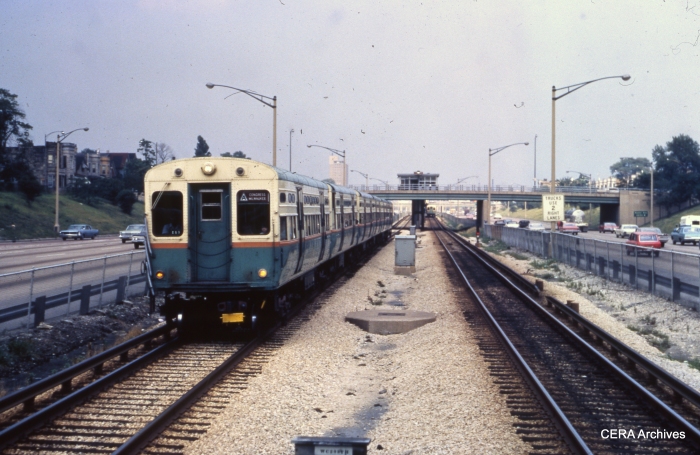
CTA 6566 heads up a train westbound at Kostner on the Congress line on August 7, 1967. (Photographer unknown)